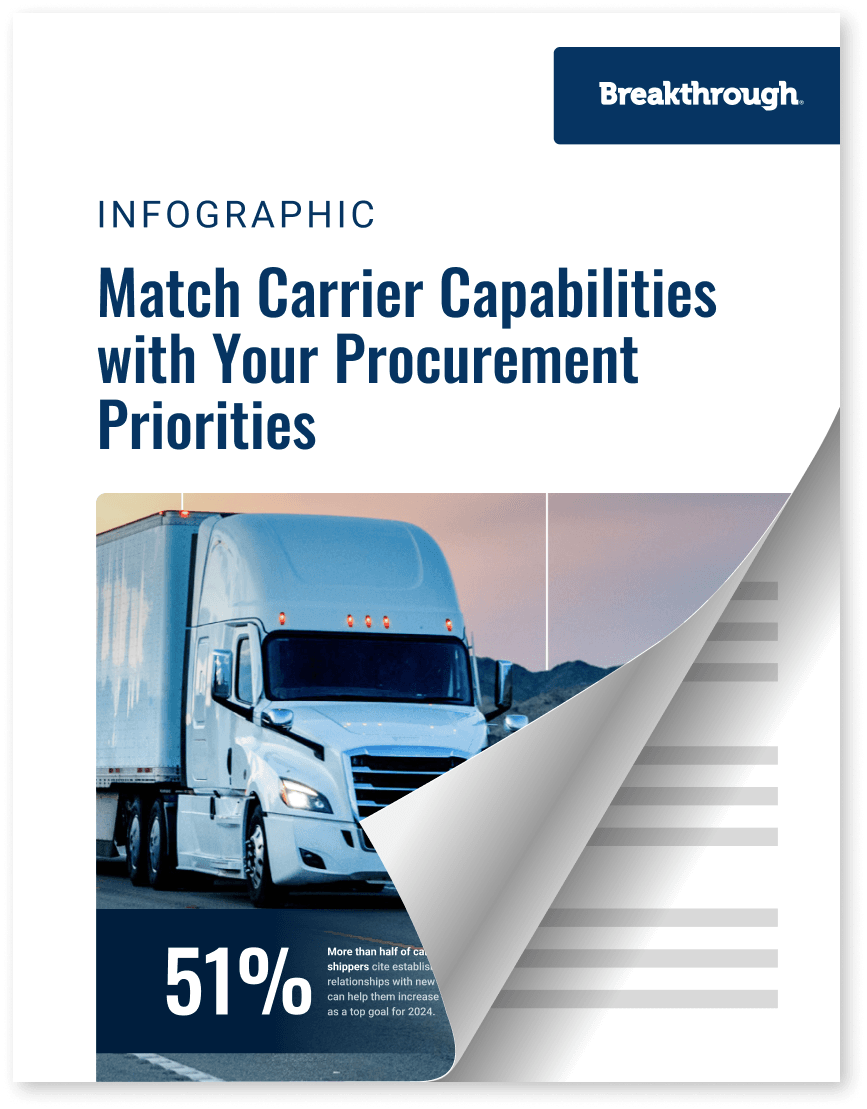Match Carrier Capabilities with Your Procurement Priorities

Fuel
2 min read
April 23, 2024
Freight
4 min read
April 22, 2024
Market Events
4 min read
April 19, 2024

5 min read
March 8, 2024

Share:
The Securities and Exchange Commission (SEC) has officially passed its long-awaited climate disclosure rule. The vote was 3-2, on a partisan split. The regulation will come into effect 60 days after it is posted in the Federal Register. The SEC climate disclosure rule comprises of two crucial components, climate risk and emissions disclosures.
Overall, the climate risk portion of the rule will affect about 7,000 domestic companies and 900 foreign private issuers. Of those companies, a subset, about 40% of the domestic estimate and 60% of the foreign estimate, will also be required to conduct materiality assessments of their Scope 1 and 2 emissions. This subset encompasses companies that are accelerated filers with between $75–$700 million in public shares and large accelerated filers with at least $700 million in public shares. The SEC's interpretation of "material" aligns with the 1976 Supreme Court definition, which includes information that could substantially impact the perception of a reasonable investor.
The climate risk component is expected to affect approximately 7,000 domestic companies and 900 foreign private issuers. The start date for these disclosures will vary depending on the size of the company. Affected companies will be required to disclose:
Of the companies affected by the climate risk component, about 40% of the domestic firms and 60% of the foreign firms will need to conduct materiality assessments to disclose their Scope 1 and 2 greenhouse gas emissions.
The first year large accelerated filers will be required to report will be in Fiscal Year 2026, while accelerated filers will begin in Fiscal Year 2028. Companies will also need to obtain and submit assurances from third-party emissions audits to the SEC. Large accelerated filers will need limited assurance from auditors by 2029 and reasonable assurance by 2033, while accelerated filers will need limited assurance by 2031.
The proposed disclosure rule included Scope 3 emissions and required all public companies to report their Scope 1 and 2 emissions in their registrations and annual reports to the SEC, but the SEC received considerable pushback from stakeholders and these requirements were ultimately removed for the final rule.
The final SEC Climate Disclosure Rule also includes or omits a few noteworthy provisions that companies should be aware of, including safe harbor protection, a requirement for board members’ climate knowledge, and reporting on climate impact by line item.
A key detail for companies is the creation of a safe harbor from private liability for climate-related disclosures. This provision will shield companies from potential legal challenges that may arise from the information they submit to the SEC.
The proposed rule had required that companies describe their board members’ climate expertise. Additionally, companies would have been required to outline the impact of severe weather, natural events, and transition activities on each line item of their consolidated financial statements. Neither of these provisions were kept for the final rule.
The SEC’s climate disclosure rule emerges in a markedly complex regulatory environment.
The European Union (EU) has set a standard with its Corporate Sustainability Reporting Directive, which has extensive Scope 3 reporting requirements, a double materiality component, and will impact large US companies with EU subsidiaries starting in 2026.
Furthermore, California has enacted SB 253 and SB 261 to advance emissions transparency within the state.
Such regulatory variations will add diverse and complex reporting requirements for companies.
Republican Attorneys General from ten states filed suit immediately after the rule was approved by the SEC. The states allege that the SEC exceeded the bounds of its authorities by requiring companies to disclose climate-related information.
The SEC’s Climate Disclosure Rule marks a significant shift in how companies will address climate-related risks and emissions. Staying updated on these changing regulations demands careful attention and strategic planning, especially for companies dealing with both local and global reporting standards complexity. This is where CleanMile comes in.
CleanMile provides your company with current and emerging regulation insights to prepare you for future policy changes. Collaborating with CleanMile provides a comprehensive strategy for climate action. This involves monitoring scope 1 & 3 transportation emissions, developing a robust transportation sustainability plan, and implementing effective strategies for shippers.
Start the conversation today to explore how we can support your company through these transitions, promoting compliance, transparency, and environmental stewardship.

2 min read
April 23, 2024
Discover how Fuel Recovery and T-Fuel can transform your fuel price risk management strategy. Achieve budget certainty, maintain relations, and mitigate risk.
Read more
4 min read
April 22, 2024
Learn how adaptive RFP processes can transform your freight procurement strategy to achieve cost savings, navigate disruptions, and improve ongoing compliance.
Read more
4 min read
April 19, 2024
Explore the profound impact of the Middle East conflict on the transportation sector, including an analysis of recent events and the resulting effects.
Read more